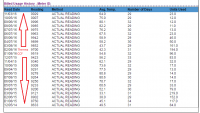patrickoneal
New Member
I have a Dunkirk PWB-5D boiler, a 40 gallon indirect tank, and two zones of fin tube baseboard radiators. All was working until today after I installed a Hydrostat 3200 aquastat and a Taco 3 zone controller.
I changed the aquastat to try to save some gas, and added the zone panel to clean up the wiring and to use the zone 3 dry contacts to signal the Hydrostat on the I1 and I2 terminals to bypass the energy saving features when hot water is called for.
I got everything wired up neatly, and I assume correctly. I powered the boiler back up with all my thermostats off, and adjusted the aquastat on the indirect tank until it called for heat(it's right beside the boiler). The zone panel indicated the call, the zone valve opened, the zone panel indicated the end switch closed. The hydrostat then opened the damper, but it didn't stop in the open position, and it started clicking like it was bouncing off a stop. I powered everything down and checked my wiring. I messed with the auto/hold open switch on my damper to get it to stop in the open position, but the boiler still wouldn't fire.
I then shut the indirect tank off and tried zone 2 of my baseboards. The zone panel again indicated correctly, zone valve opened, and the damper started moving. This time it decided to just keep spinning, 360 degrees over and over(is there a mechanical stop on those things?). I switched the hold-open switch to stop it in the open position, and the Hydrostat 3200 started making some strange noises. Then a small amount of smoke came out of it(the hydrostat).
Does anyone have the pinout for the 6 pin damper connector? Is it supposed to stop on it's own, or does the aquastat signal it to stop?
I'm going to reinstall the old aquastat(I can't trust the new one after it smoked). I'm 99% certain that the hydrosmart stat I got is defective.
Besides my questions on damper operation, can anyone recommend a "smart" aquastat? I'm not sure I want another Fuel Smart 3200.
I changed the aquastat to try to save some gas, and added the zone panel to clean up the wiring and to use the zone 3 dry contacts to signal the Hydrostat on the I1 and I2 terminals to bypass the energy saving features when hot water is called for.
I got everything wired up neatly, and I assume correctly. I powered the boiler back up with all my thermostats off, and adjusted the aquastat on the indirect tank until it called for heat(it's right beside the boiler). The zone panel indicated the call, the zone valve opened, the zone panel indicated the end switch closed. The hydrostat then opened the damper, but it didn't stop in the open position, and it started clicking like it was bouncing off a stop. I powered everything down and checked my wiring. I messed with the auto/hold open switch on my damper to get it to stop in the open position, but the boiler still wouldn't fire.
I then shut the indirect tank off and tried zone 2 of my baseboards. The zone panel again indicated correctly, zone valve opened, and the damper started moving. This time it decided to just keep spinning, 360 degrees over and over(is there a mechanical stop on those things?). I switched the hold-open switch to stop it in the open position, and the Hydrostat 3200 started making some strange noises. Then a small amount of smoke came out of it(the hydrostat).
Does anyone have the pinout for the 6 pin damper connector? Is it supposed to stop on it's own, or does the aquastat signal it to stop?
I'm going to reinstall the old aquastat(I can't trust the new one after it smoked). I'm 99% certain that the hydrosmart stat I got is defective.
Besides my questions on damper operation, can anyone recommend a "smart" aquastat? I'm not sure I want another Fuel Smart 3200.

